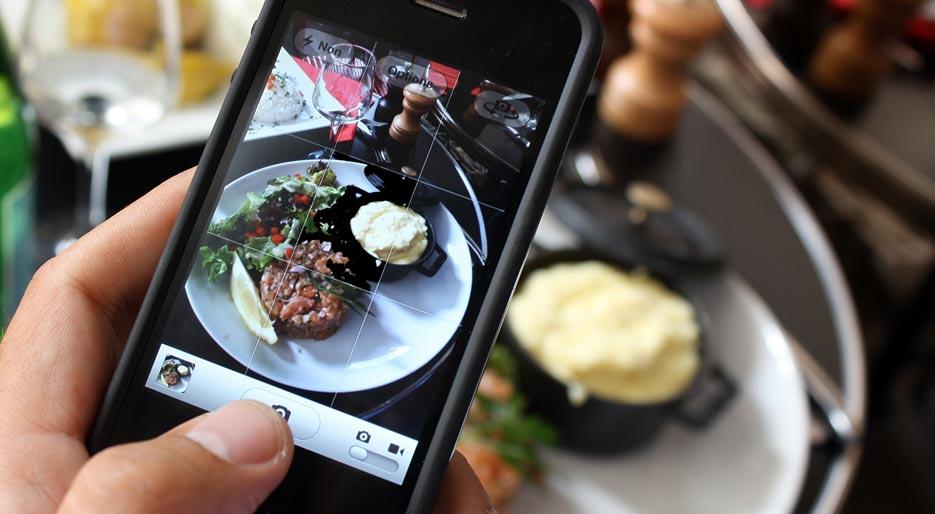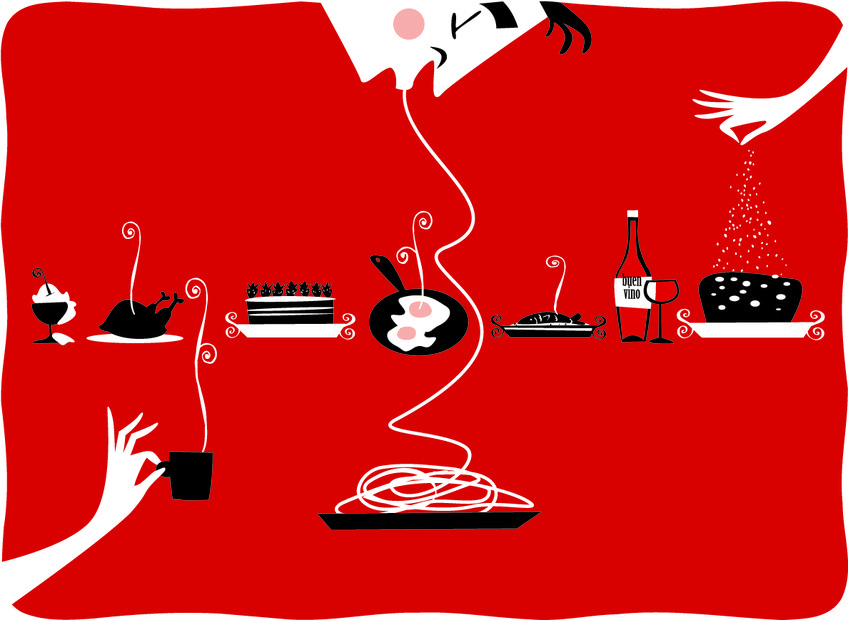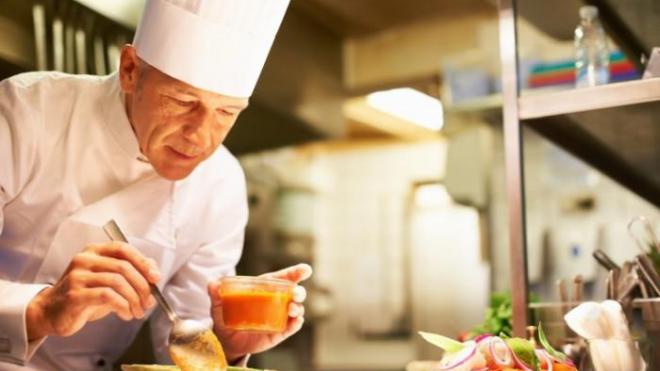What is the author’s recipe
Culinary activities are in great demand today. On every corner you can see a cafe, restaurant or catering. People are looking for new experiences, choosing cozy places for this, where, as an exception, you can order an original tasty dish. In addition, home cooking is also developing. Housewives are no longer limited to the simple dishes we are used to. They come up with something new, interesting, creating real culinary masterpieces. In this regard, more and more ideas, methods and methods of preparation appear, which the authors try to keep secret. After all, no one wants to share their work with someone, and even more so their income.

That is why in this article we will tell you how to protect a recipe and what copyright rules govern it. Interesting? Then let’s discuss.
In order to determine what is copyright in a culinary recipe , consider the legal nature of this issue.
As we know, Ukrainian legislation regulates that the objects of copyright are literary, scientific works, works of art. Also, the way they are created is irrelevant. However, there is an exception which states that copyright does not protect an object such as a method, method or any process.
Based on the above, the question arises whether a culinary recipe is subject to copyright at all. After all, first of all, a recipe is a certain way of preparing a certain dish.
Under copyright protection are not recipes as independent objects, but their display in text and photographs. What does this mean? For example, the site contains the order of preparation of a dish, which is supported by photographs. You cannot use these objects for your own purposes (post on pages, add to videos, etc.), because this would be a violation. However, you have the right to prepare your dish according to this recipe (possibly with your own changes). Then you describe your cooking method and algorithm, take a photo, and exhibit it. And that’s all. These objects are now yours and protected by copyright.
UNESCO Chair on the Legal Nature of Culinary Recipes
As you already understood, the legal nature of a culinary recipe is a rather controversial issue. The UNESCO Chair undertook to characterize this object. Legal issues related to intellectual property fall entirely within the scope of the scientific activities of the UNESCO Chair. Its competence is governed by the Agreement Establishing a UNESCO Chair in Copyright and Other Intellectual Property Rights, which was signed in Paris by the Director General of the United Nations Educational, Scientific and Cultural Organization (UNESCO) on 12.06.1998.
Based on various norms (national and international), having studied the doctrinal interpretation, the following legal conclusions were made:
- If it is necessary to establish the true legal nature of a culinary recipe, first of all, it is necessary to analyze and determine a number of those normative legal acts that regulate this issue and the elements interrelated with it.
- According to Ukrainian legislation, copyright arises in relation to objects that are of a literary or scientific nature, in relation to objects of art, regardless of the method or method of their creation and expression. In addition, copyright arises regardless of whether the object is made public or not. The main thing is that it should be expressed in some objective form.
The legal framework regulates and establishes a certain list of objects that are subject to copyright. These are scripts, choreographic performances, musical developments, audio or video materials, objects of fine art and much more. However, copyright does not apply to various methods, techniques, processes, ideas, principles, etc. All of these principles are based on an international legal decision related to the activities of copyright. These norms can be found in conventions such as the Berne and the World.
Recipe copyright

How to protect copyright recipe ? An interesting question. Let’s take a closer look at it.
Based on what characteristics a recipe possesses, its author has two ways of protection – to obtain a patent or establish a know-how regime.
How can a recipe be patented? You can get an invention patent or a utility model patent. If you take any group of ingredients, then they can be patented as a product. The cooking process itself can be patented as a process or method that is under special legal protection. Each of these procedures has its own characteristics and implementation algorithm. The only thing they all have in common is getting protection for your recipe.
Lawyers and other experts argue that the most popular and practical form of prescription protection is its registration as a trade secret (know-how). The main feature is the non-disclosure of all information related to the recipe.
It is important to know that in this case, the company independently establishes and controls all the necessary precautions regarding the secrecy of secret information about the recipe. To do this, the company can take the following actions:
- draw up, sign and convey an appropriate document, which regulates that this or that information is confidential, and its disclosure entails responsibility;
- define a limited list of people who will have access to such information;
- provide additional training for employees who will have access to trade secrets;
- establish the form and nature of responsibility for the dissemination of information,
- which is a trade secret.
Examples of companies that protect their recipes with trade secrets are KFC (Kentucky Fried Chicken), Coca-Cola.
A special advantage of know-how is its timing, which in fact does not exist. Trade secrets are issued for an unlimited period. It ends when the principle of “secrecy” is violated, when information becomes known to a large number of people.
In any case, in order to avoid the risk of stealing your developments or using them for commercial purposes, we advise you to contact the appropriate specialists for help. The experts of the Wise Group have high qualified knowledge and extensive experience in carrying out these procedures. With their help, you can be sure that your recipes are protected.
In addition, there are several independent methods that may save you and your work from unscrupulous competitors. What is this? We will discuss now.
Food Recipe Protection Mark
The first such independent method will be the so-called copyright mark (copyright mark), which contains the name of the owner or author of the object. This subject can be both an individual and a legal entity. In addition, the sign may indicate the object itself, which is under protection. In this case, the indication of the year of creation is a prerequisite.
It is interesting that this sign is not endowed with any special function, it also does not grant additional rights to the author. Why is he needed then? Its purpose is to notify a person that a particular object is under copyright protection. In addition, this mark is optional.
It should be noted that placing a sign under the text of your recipe does not protect you from hostile competitors. In this case, the mark can be removed, and the text can be simply copied. It’s another matter if the photo has such a designation. It is difficult for an ordinary person to remove elements from the picture, and in most cases it makes no sense to involve a specialist for this. Therefore, those wishing to use the recipe are more likely to decide to conclude a contract with the author.
Drafting of copyright and signature on photos
Now we invite you to discuss such an interesting and important issue as the author’s signature on a photograph of a culinary recipe. This is another method by which the author of a recipe can preserve his work.
Very important! The photo on which the signature will be placed must be the author’s, that is, developed (made) personally by the author of the recipe. Borrowing photos from other people’s sites and other people’s dishes excludes the possibility of their use.
So, what should an author’s signature consist of? This:
- special copyright mark (protection mark);
- Full name (or pseudonym, nickname) of the author of the recipe;
In addition, there are certain design requirements, namely:
- The author’s signature must be clear, legible and accurate. After all, it is one of the forms that reflect the author of the recipe.
- The signature should not be removed easily. There are certain ways and methods that make this or that sign difficult to remove. Your author’s signature must be the same. After all, what is the point of it, if it is not difficult to remove it, which means that competitors will be able to appropriate your developments with ease.
- The signature and the site where the recipe is posted must be linked. For what? So there are problems with its removal. When trying to avoid the author’s signature, ill-wishers will also have to work with the installed protection of the site itself.
- There are cases when authors create an author’s signature, which makes the photo of a dish unreadable and unreadable. This is by no means permissible!
Author’s confirmation of the text and photos of the recipe

Another way to protect your copyright recipe is with copyright confirmation (copyright receipt). What does this mean? Under the text or in the photo, you place a text in which you indicate that it is you who are the author of this recipe, that you do not allow to use it without your consent, and also at the end you write that the text was composed by you, and the photo shows the dish you cooked. Here’s an example:
“I, Ivan Ivanov, confirm that all rights regarding the posted material belong to me as the author. The text was written by myself, and the photo I took shows the dish I prepared. ”
However, you should be aware that no correction or editing of the text is allowed. Otherwise, it will be displayed on the site, and the publication date will change. Such data can play against you in court, that is, it can be proven that this copyright confirmation did not exist, and you added it after the fact of violation of copyright .
An example of a recipe
And at the end, we suggest you consider an illustrative example of design of a culinary recipe . This text is only an example and may not correspond to the reality of the cooking process. Therefore, we do not recommend using this recipe as one of the cooking methods. So here’s an example:
“Oven baked chicken with spices”
Chicken fillet – 2 kg
Salt, black pepper, red pepper, dry basil, dry garlic – to taste
Rinse the fillets. Cut into four parts. Marinate the meat using the above spices (the list may vary depending on your preferences).
Prepare the dishes in which we will bake the chicken. Lubricate the bottom and walls with sunflower oil. We spread the chicken. Cover with foil. We make holes in the foil.
We bake in the oven at 180 degrees for 50-60 minutes.
(Under the text, if available, we place a photo of the cooking process, as well as the finished dish)
Copyright Confirmation:
“I, Ivanov Ivan Ivanovich, confirm that all rights regarding the posted material belong to me as the author. The text was written by myself, and the photo I took shows the dish I prepared. ”
Thus, we discussed the issue of copyright protection for culinary recipes. It was interesting? Read about the changes in legislation that have been adopted regarding trademarks.
Recipes are also intellectual property. And many of their authors seek to register their copyrights. In practice, there are many cases when a unique recipe is gaining immense popularity, and the culinary specialist receives his monetary reward for this.
In order for the registration procedure to be successful and you receive the corresponding Certificate, contact the experts on intellectual property issues for help. We have been working in this area for 10 years and we know how to register quickly and efficiently!
Want to get a free consultation? Then leave a request on our official website!

Position: Lawyer in the field of intellectual property
Work experience: 8 years. Candidate of Legal Sciences.
Specialization: Deals with the protection and registration of intellectual property objects, writing claims and statements of claim. Registers objects in the customs register.
Rated 4.5 based on 743 replies
